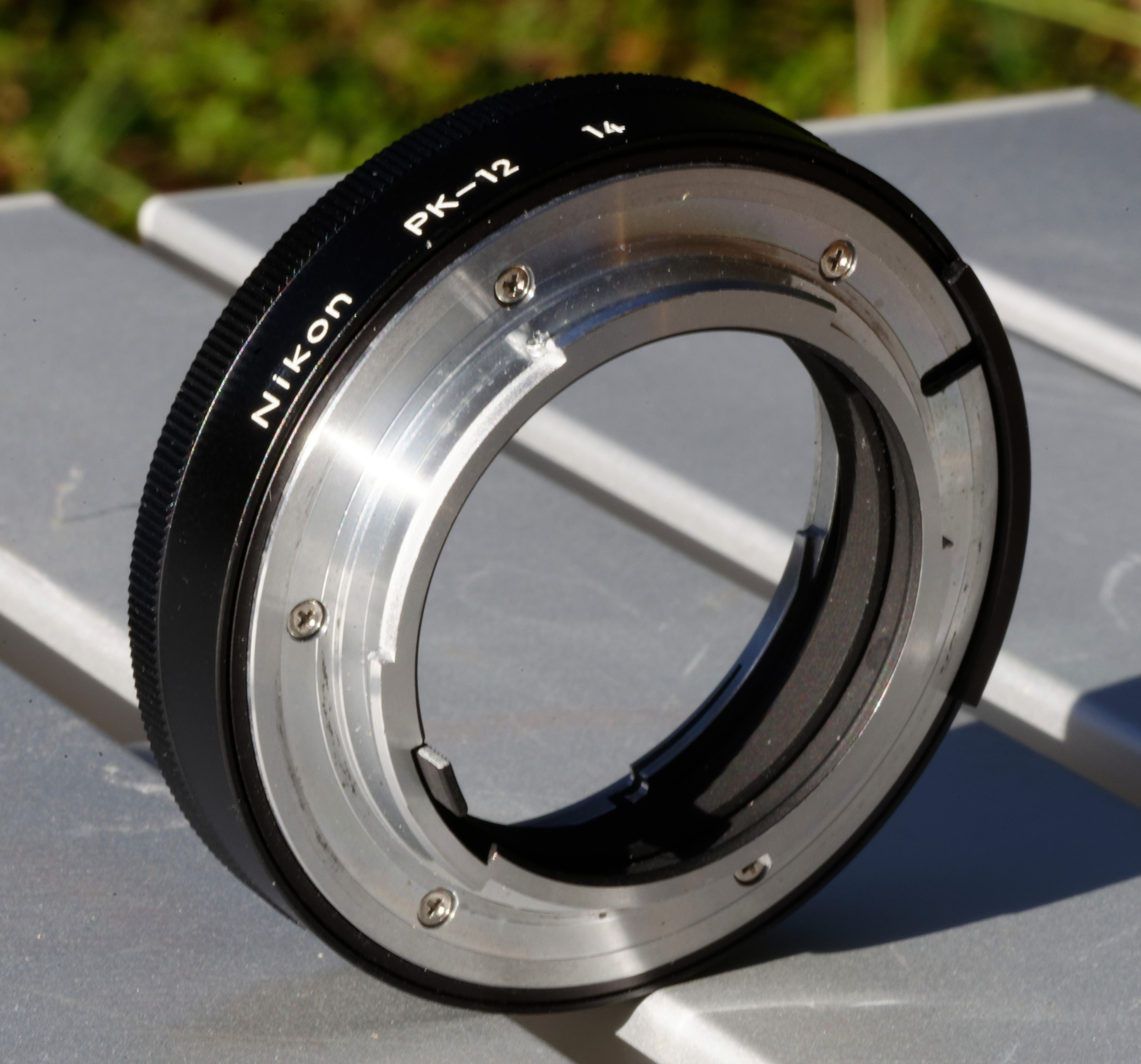Extension tube on:
[Wikipedia]
[Google]
[Amazon]
An extension tube, sometimes also called a closeup tube or an extension ring, is used with interchangeable lenses to increase magnification. This is most often used in macro photography.

 The tube contains no optical elements; its sole purpose is to move the lens farther from the image plane. The farther away the lens is, the closer the
The tube contains no optical elements; its sole purpose is to move the lens farther from the image plane. The farther away the lens is, the closer the
Experiments with Close-up Lenses and Extension Tubes
Photography equipment {{photo-stub
Construction

 The tube contains no optical elements; its sole purpose is to move the lens farther from the image plane. The farther away the lens is, the closer the
The tube contains no optical elements; its sole purpose is to move the lens farther from the image plane. The farther away the lens is, the closer the focus
Focus, or its plural form foci may refer to:
Arts
* Focus or Focus Festival, former name of the Adelaide Fringe arts festival in South Australia Film
*''Focus'', a 1962 TV film starring James Whitmore
* ''Focus'' (2001 film), a 2001 film based ...
, the greater the magnification, and also the greater the loss of light (requiring a longer exposure time). Lenses classically focus closer than infinity by moving all optical elements farther from the film or sensor; an extension tube simply enables this movement.
Because extension tubes do not have optics, they do not affect the optical quality of a lens. Because of their function, there are other effects: decrease of light; shallower depth of field; and loss of ability to focus at infinity. The longer the extension tube, the closer the lens can focus. Correspondingly, the amount of light and depth of field will be reduced. On modern cameras using auto exposure the decrease in exposure is all corrected for by the camera, but when not using auto exposure this has to be calculated and taken into account when setting exposure. The exposure compensation, called the bellows factor
A bellows or pair of bellows is a device constructed to furnish a strong blast of air. The simplest type consists of a flexible bag comprising a pair of rigid boards with handles joined by flexible leather sides enclosing an approximately airtigh ...
, is a dimensionless ratio that is applied to the relative aperture (f-number
In optics, the f-number of an optical system such as a camera lens is the ratio of the system's focal length to the diameter of the entrance pupil ("clear aperture").Smith, Warren ''Modern Optical Engineering'', 4th Ed., 2007 McGraw-Hill Pro ...
), resulting in the working f-number of the lens and extension tube combination.
The precise reduction of the amount of light reaching the imaging plane can be calculated using the inverse square law formula.
Extension tubes without electrical contacts will not allow an electronic automatic camera to control the lens, thus disabling autofocus
An autofocus (or AF) optical system uses a sensor, a control system and a motor to focus on an automatically or manually selected point or area. An electronic rangefinder has a display instead of the motor; the adjustment of the optical system ...
and in some cases forcing a user to shoot wide open unless the lens offers manual aperture control. More expensive extension tubes contain electrical contacts allowing the user to use autofocus and electronically control the aperture of the attached lens. An advantage to the non-electrical tubes is their lower price.
Other items like lens adapters may unintentionally have an effect similar to an extension tube. A lens designed for a small flange focal distance may not be able to focus to infinity when a lens adapter places the sensor too far away.
Versus teleconverters and close-up lens
Extension tubes are sometimes confused withteleconverter
A teleconverter (sometimes called tele extender) is a secondary lens mounted between a camera and a photographic lens which enlarges the central part of an image obtained by the lens. For example, a 2× teleconverter for a 35 mm camera enl ...
s, an optical component (i.e., containing lenses) designed to increase effective focal length.
A close-up lens
In photography, a close-up lens (sometimes referred to as ''close-up filter'' or a ''macro filter'') is a simple secondary lens used to enable macro photography without requiring a specialised primary lens. They work like reading glasses, allow ...
also enables focusing closer for macro photography but, unlike an extension tube, a close-up lens actually is an optical element.
See also
*Bellows (photography)
In photography, a bellows is the accordion-like, pleated expandable part of a camera, usually a large or medium format camera, to allow the lens to be moved with respect to the focal plane for focusing. Bellows are also used on enlarger
An en ...
* Reversing ring
References
External links
*Experiments with Close-up Lenses and Extension Tubes
Photography equipment {{photo-stub